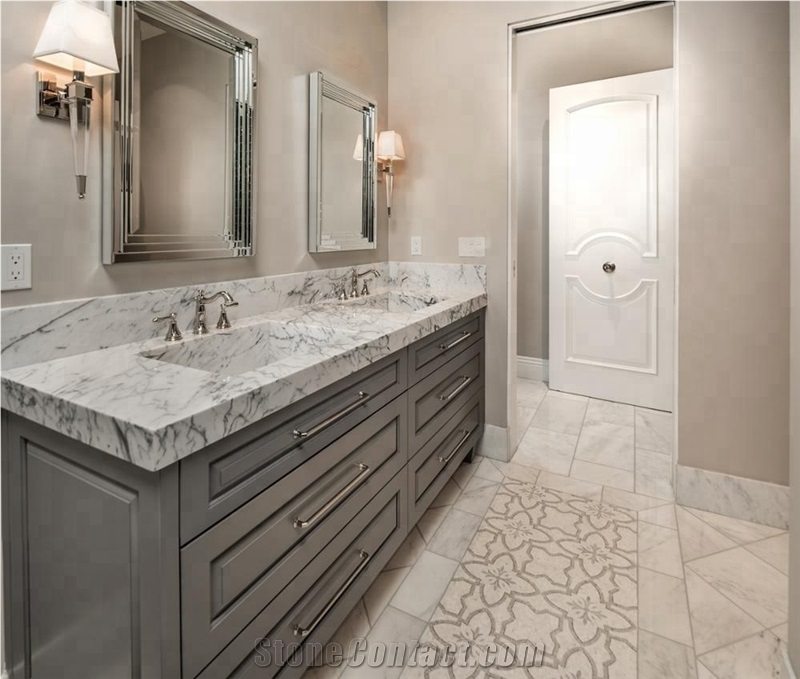Comparing Cultured Marble Vanity Sinks to Natural Stone Sinks
When choosing a vanity sink for your bathroom, you may consider both cultured marble and natural stone options like marble or granite. Each material has its own unique characteristics and benefits. Here’s a comparison between cultured marble vanity sinks and natural stone sinks to help you make an informed decision for your bathroom renovation.
Cultured Marble Vanity Sinks
Pros:
- Affordability: Cultured marble is generally more affordable than natural stone options, making it budget-friendly for homeowners.
- Customization: Cultured marble can be molded into various shapes and sizes, offering flexibility in design. It is also available in a wide range of colors and patterns.
- Durability: Cultured marble is durable and resistant to chips, scratches, and stains, making it suitable for high-traffic bathrooms.
- Low Maintenance: The non-porous surface of cultured marble is easy to clean and does not require sealing like natural stone.
- Consistency: Cultured marble offers consistency in color and pattern, making it easier to match multiple sinks or other bathroom fixtures.
Cons:
- Susceptibility to Damage: While durable, cultured marble can be damaged by sharp objects or heavy impacts, leading to scratches or chips.
- Limited Heat Resistance: Cultured marble is not as heat-resistant as natural stone. It is recommended to use trivets or mats under hot items to prevent damage.
- Potential for Staining: Despite its non-porous surface, cultured marble can still be susceptible to staining if spills are not promptly cleaned.
- Longevity Concerns: Over time, the gel coat finish of cultured marble sinks may wear down, requiring refinishing to restore its original appearance.
Natural Stone Sinks (e.g., Marble or Granite)
Pros:
- Luxurious Appearance: Natural stone sinks like marble or granite offer a luxurious, high-end look with unique veining and patterns.
- Durability: Natural stone sinks are extremely durable and resistant to scratches and heat, making them suitable for long-term use.
- Heat Resistance: Natural stone is highly heat-resistant, making it less prone to damage from hot items compared to cultured marble.
- Timeless Appeal: Natural stone sinks have a timeless appeal and can increase the value of your home due to their perceived luxury.
Cons:
- Cost: Natural stone sinks are typically more expensive than cultured marble, making them a higher investment for homeowners.
- Maintenance: Natural stone requires regular sealing to prevent staining and maintain its appearance, which adds to the maintenance routine.
- Variability: Each piece of natural stone is unique, which can make it challenging to match multiple sinks or achieve a uniform look in your bathroom.
- Installation Challenges: Natural stone sinks can be heavy and may require additional structural support during installation.
Conclusion
Choosing between cultured marble vanity sinks and natural stone sinks depends on your budget, aesthetic preferences, and maintenance considerations. Cultured marble offers affordability, customization, and ease of maintenance, while natural stone provides a luxurious appearance, durability, and heat resistance. Consider these factors carefully to select the sink that best fits your bathroom design and lifestyle needs.






